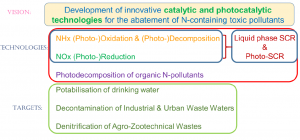
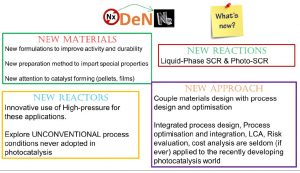
The development of effective methods for the abatement of some harmful pollutants from waste waters and from hydric resources is a challenging task. Nitrogen containing compounds, such as inorganic ammonia, nitrites and nitrates, and some organic N-containing compounds (dyes, pesticides, drugs, etc.), are harmful contaminants for drinking water, inducing acute and/or chronic diseases, especially affecting infants and children. Furthermore, when released in waste waters they contribute to eutrophication, or possibly contaminate ground water. This is particularly relevant in agriculturally intensive zones and in the case of some relevant industrial processes involving e.g. nitration reactions.
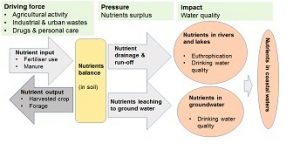
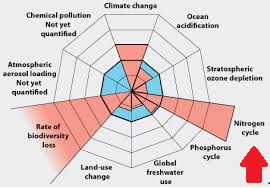
In the present project, we aim at developing innovative processes for the abatement of N-containing compounds, focusing on selectivity towards innocuous N2, to be applied for the treatment of waste waters to meet legislative specifications. The same processes, properly adapted and sized, may be also extended to the treatment of drinking water, for its potabilisation in particularly critical areas.
We will take advantage of the group experience in the development of unconventional catalytic and photocatalytic processes to propose a combined strategy for the elimination of all the mentioned species. This is a critical issue, because low abatement efficiency for N-containing pollutants has been evidenced when monitoring the depuration capability of Lombardy region, especially when dealing with small, decentralised plants (60-66% vs. a regional target of 75%).
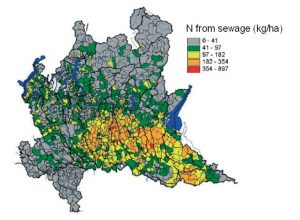
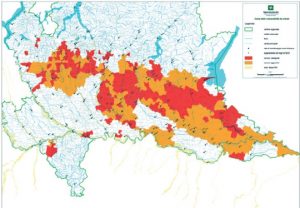
In particular, we will deal with the following approaches to the problem:
- Photoreduction of nitrates and nitrites.
- Photo-oxidation of NH3
- Photodegradation of N-containing organic compounds representing persistent pollutants in water. Some examples of dyes, pesticides and drugs will be considered in this frame.

